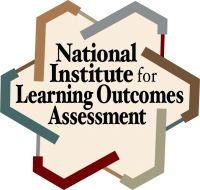Description
This is a written assignment intended to measure how well students can take concepts they have learned within the General Psychology course and apply them to a novel situation and a real world problem related to an individual’s becoming homeless. The goal is for students to be able to locate and evaluate evidence and draw conclusions about this complex question from different perspectives.
Background and Context
The Applying Psychological Concepts assignment is a written assignment that is intended to measure applied learning in the discipline of psychology. More specifically, it is intended to demonstrate how well students can take concepts that they have learned within the General Psychology course and apply them to a new context. Students are asked to posit 2 biological and 2 social factors that may be related to an individual’s becoming homeless. Within the context of the course, students are exposed to social factors that influence an individual, such as family, peers, and work, as well as biological factors such as genetics. Examples are given as to how these factors impact the overall development and life trajectory of the individual, but homelessness is not specifically addressed. Thus, students are being asked to use concepts they have learned about and apply them to a novel situation and a real world problem. The goal is for them to be able to locate and evaluate evidence and draw conclusions about this complex question from different perspectives.
Reflections
This assignment is used in all sections of General Psychology (PSY 150) at Marymount California University (MCU). Professors typically administer this assignment near the end of the semester, sometimes in place of a final paper, sometimes as the last of several assignments, and sometimes in lieu of a final examination. Each semester, we offer 3-5 sections (20-30 students per section) of the course.
There are two primary types of students who enroll in General Psychology. The first group is students enrolled in our BA program in psychology who take PSY 150 as the foundational course in the major. The other group of students includes those completing the course to fulfill the general education behavioral/social sciences requirement. A large proportion of students in PSY 150 are freshmen or sophomores.
The purpose of the assignment is to see how well students can analyze a novel situation from multiple psychological perspectives, using concepts and information they have learned in class and gathered from other scholarly sources. This assignment, we feel, also has great potential for use as a longitudinal assessment that is given to students in General Psychology or other introductory psychology courses and then again in their senior year in a more advanced course. This would allow the institution to measure change in students as they progress through the curriculum.
The first set of data from this assignment was collected from 5 sections of PSY 150 at the end of the spring 2013 semester. At that time, the results were as follows:
- Students did well identifying both social and biological factors that could contribute to homelessness, with 88% of students scoring a 4 or 5 (out of 5) on these sections of the rubric.
- Students generally did well supporting their statements with scholarly research, with an average of 82% scoring 4 or 5.
- The average grade on the assignment across all 5 sections was 79.8 out of 100.
- Across the 5 sections, 92.2% of students scored 70 or higher on the assignment, which was the arbitrary benchmark we had set.
In fall 2013, we analyzed data from 3 sections of PSY 150 and found generally similar results, with one exception:
- When identifying the factors contributing to homelessness, 81% scored 4 or 5.
- Relatively fewer students in these sections compared to those from spring 2013 were able to support their statements with research, with 59% scoring a 4 or 5.
- The average grade for the whole assignment across sections was 79.3 out of 100.
- A total of 86% of students scored 70 or higher.
Overall, we were pleased that students did well identifying and distinguishing between social and biological factors that contribute to the development of psychosocial problems. Some professors have used the results from this assignment to take opportunities in class to give more examples of how psychological concepts play out in the real world, and we believe that this assignment encourages students to do this as they encounter situations outside the classroom. It has been suggested by our faculty that in future iterations of the assignment, students could be asked to analyze a different problem (e.g., what factors might lead to obesity, depression, etc.) using the same framework. We believe strongly that similar assignments requiring students to apply concepts learned in class to a real world problem could easily be implemented in other behavioral/social science courses, such as sociology, political science, and criminal justice.
The one area where students did not perform as well as we had hoped was in using sources to support claims. We intend to put more attention in future semesters on instructing students in identifying, utilizing, and citing scholarly sources.
We have decided to keep the assignment in its original format in order to collect data for 1 more year before making any changes. We hope that this will allow us to see trends across different cohorts of students and different professors so that we can make generalizations and decisions based on multiple data points.
Please select an option
The assignment library and the assignments within are licensed under a Creative Commons Attribution 4.0 International License. By clicking “Ok” you agree to cite each assignment (including modifications), with the provided citation on the assignments downloaded from this site.
OK

